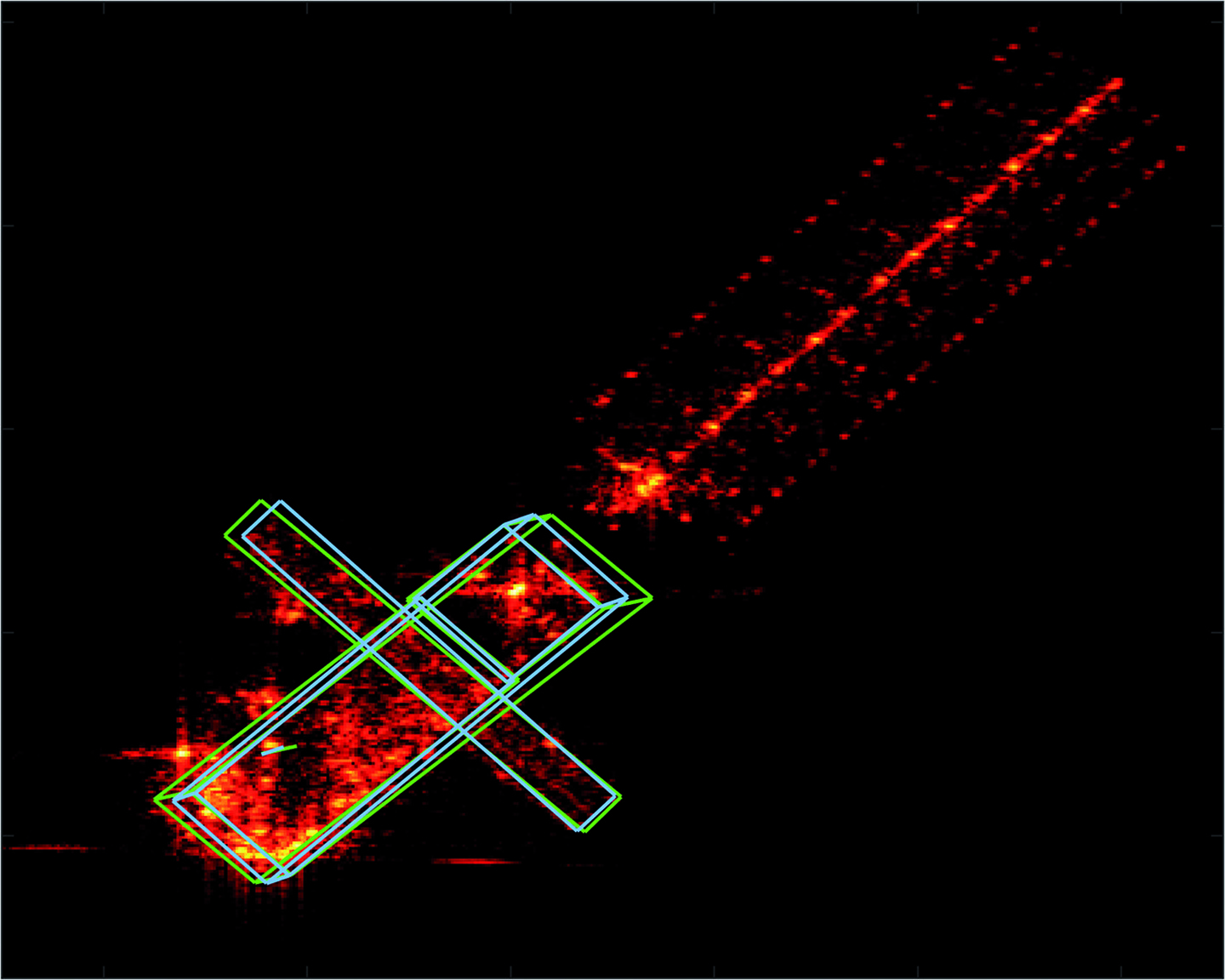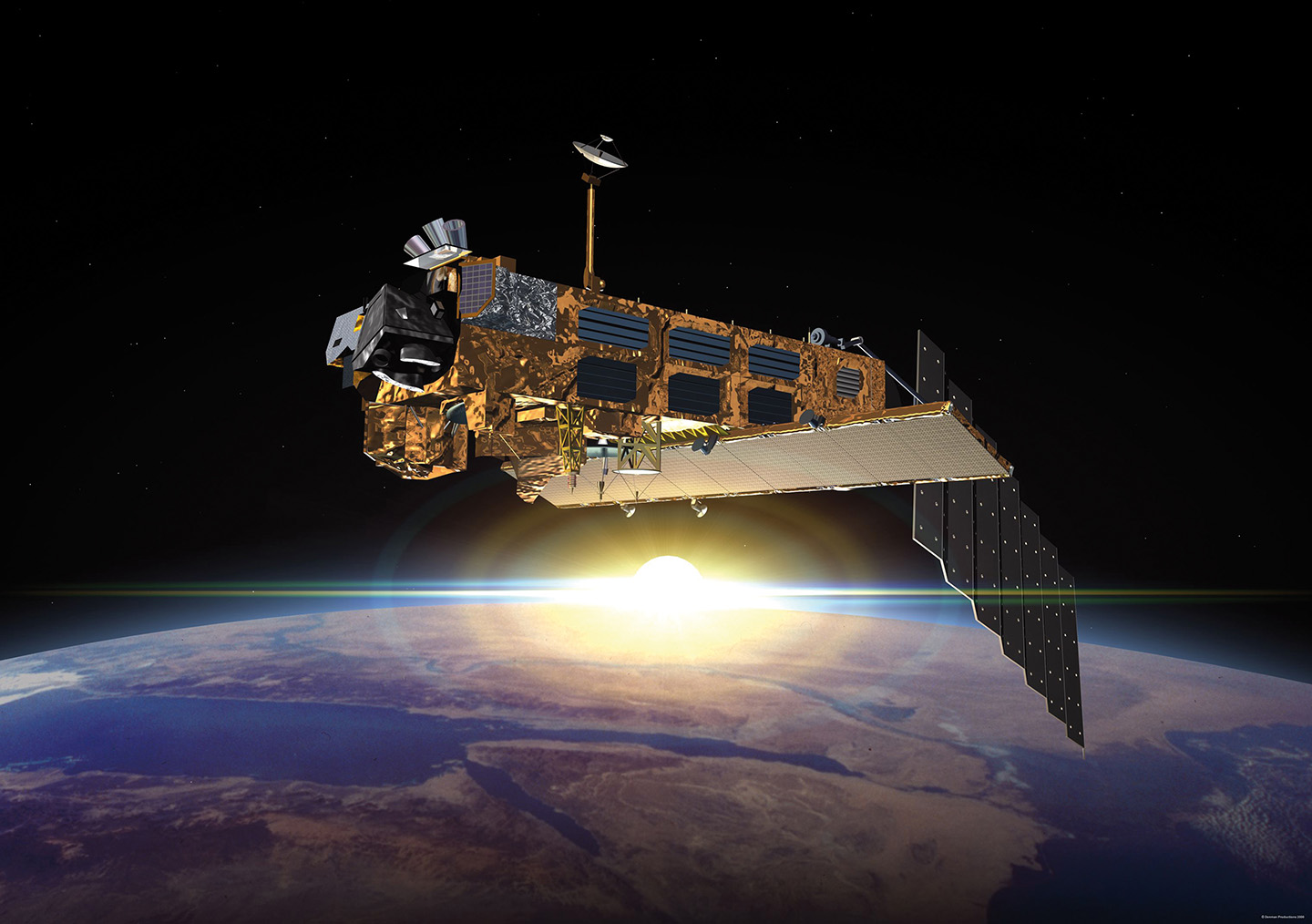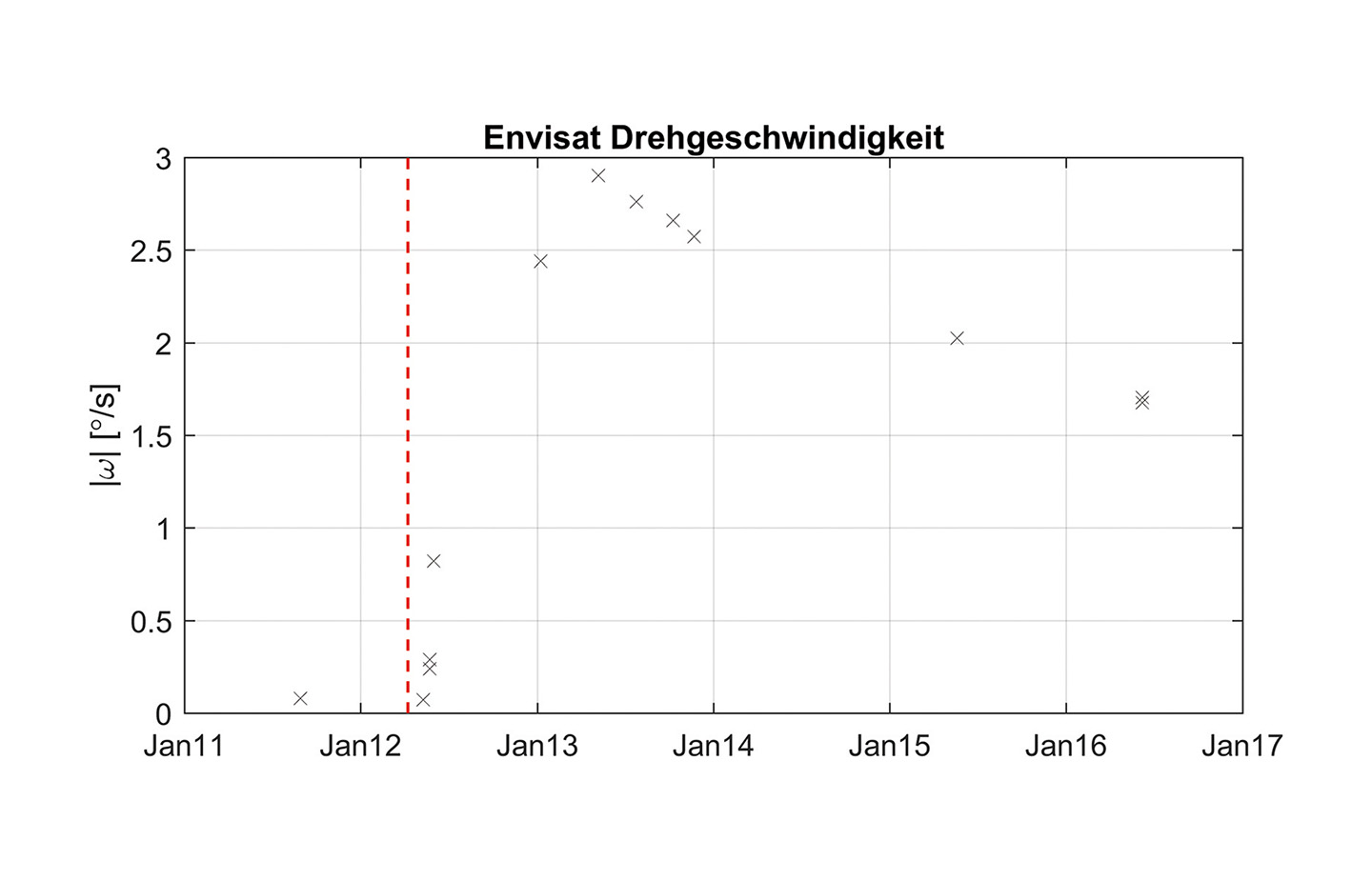LONG-TERM ANALYSIS OF THE ATTITUDE MOTION OF THE DEFUNCT SATELLITE ENVISAT



The European environmental satellite ENVISAT has been flying uncontrolled in space since April 2012. Fraunhofer FHR has developed techniques to determine the rotation of the satellite so as to support future ESA missions that are undertaken to ensure the controlled re-entry of the satellite in the Earth's atmosphere.
ENVISAT is one of the largest spacecraft launched by ESA. The Earth observation satellite flies in a near-Earth orbit at a height of 767 km, and therefore in an orbital region that is densely populated with objects. Due to this high density, the risk of ENVISAT colliding with other objects always exists.
Contact with ENVISAT was lost in April 2012. Since then, the satellite has been flying uncontrolled and therefore not only poses a threat to active satellites but could also contribute to the creation of new debris in the event of a collision with other objects. ESA is currently investigating ways of drawing ENVISAT into a lower orbit so that it can burn up faster in the Earth's atmosphere.
In such deorbiting missions, it is essential to calculate the attitude motion of the satellite as this, together with other parameters, determines which method should be used to capture the satellite. Thanks to ISAR imaging, radar offers the possibility of generating high-resolution images of space objects. In contrast to other optical systems, radar can operate in all weather conditions and at any time of the day or night. In addition, the resolution is not dependant on the distance between the radar and the object. Moreover, the rotational speed of fast-rotating objects such as ENVISAT and slow-rotating objects with less that a full revolution per passage can be determined. The raw data of ENVISAT, which was collected with TIRA, is now being processed and evaluated with methods that have been developed at Fraunhofer FHR over the last years.
Rotational speed using wireframe models
High-resolution radar images are created by using the relative rotation of the object to the stationary radar. The object is illuminated from various aspect angles. The difficulty with this imaging technique is that the cross-range scaling in the radar image depends on the actual rotational speed, which itself has to be obtained from the data. At Fraunhofer FHR, this problem is remedied through the utilization of wireframe models of the object to correctly estimate cross-range scaling. Wireframe models are manually adapted to various images of a passage. The rotational speed of the object can then be estimated from the temporal development of several wireframe models in the course of a passage. The main body of the satellite with SAR antenna and the solar panel are clearly visible. The manually adapted wireframe model of the main body is superimposed (blue) as is the model aligned on the basis of the estimated rotation vector (green).
Long-term observation of the attitude motion
Observations from the period between 2011 (shortly before contact with the satellite was lost) and 2016 were used to analyze the long-term development of the satellite's motion. Prior to loss of contact, ENVISAT was rotating relatively slowly at approx. 0.07°/s, which corresponds to approximately one revolution per Earth orbit. Shortly after contact was lost on 8 April 2012 (red line), it was observed that the rotation rate had increased to almost 3°/s, which corresponds to approximately 45 revolutions per Earth orbit. As the increase was gradual and not sudden, it is most likely caused by a failure of the satellite stabilization system as opposed to a collision with other objects. A slowing of the rotational speed has been observed since mid-2013. At the end of 2016, it was approx. 1.6°/s. This decrease is most likely due to the braking effect of the Earth's magnetic field.
The image-based reconnaissance methods developed at Fraunhofer FHR can be used not only to analyze external damage to satellites but also to determine their orientation and attitude motion and predict their long-term development.